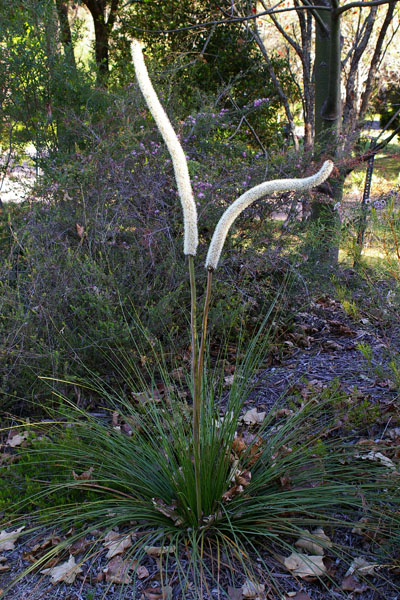General Description:
This genus of about 15 species comprises perennials with an underground stem and with or without a tall, rough stem above the ground. The genus is related to the lilies but most botanists place the species in a separate family, the Xanthorrhoeaceae.
X.minor is a small, grass-like plant with arching, linear leaves to about 80 cm long. The leaves are usually concave in cross-section. This species does not develop an above ground trunk, however, it has a branched subterranean trunk which can produce a multi-crowned habit with leafy clumps developing at the top of each trunk. Although grass-like in appearance, the leaves are stiffer than those of typical grasses. Like other members of the genus, it is slow growing. There are two subspecies: subsp. minor and subsp. lutea, the differences not being particularly apparent to the non-botanist.
The individual flowers are white or cream and very small. They are clustered together in a spear-like spike which can reach about 1 metre in height. The flowers contain considerable nectar which was used by aborigines to produce a sweet drink by soaking the flowers in water. The nectar also attracts honey eating birds. Flowering occurs in spring but it may not occur annually. The flowers are followed by fruits containing a few hard, black seeds.
Although not commonly cultivated, X.minor is an excellent garden plant which can flower in about 4 years from seed but may take longer. It requires well drained soils in sun or dappled shade. The plant also makes an excellent container specimen.
Seed germinates easily without pretreatment, although growth is slow.

Xanthorrhoea minor – plant habit.
Photo: Brian Walters

Xanthorrhoea minor – cluster of small flowers.
Photo: Brian Walters
 Australian Native Plants Society (Australia)
Australian Native Plants Society (Australia)